介绍
在flask中,响应的方式有很多种,可以是普通字符串、json数据、html文本、模板或者是重定向。视图函数的返回值会自动转换为一个响应对象
当响应对象是字符串时
-
根据这个字符串和缺省参数自动生成一个用于返回的 响应对象
@app.route("/test")
def test():
return "hello world test!!!!"调用(从header中可以看出,响应的报文是文本内容)

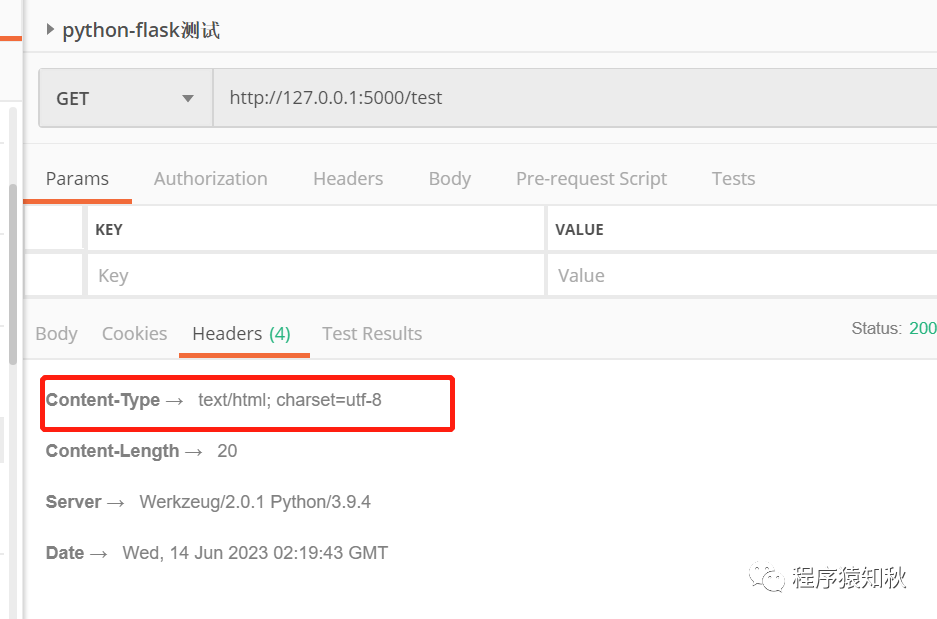
当响应对象是字典时
-
会自动调用 jsonify 创建一个响应对象
@app.route("/test2")
def test2():
cc={"name":"zhangsan","age":11}
return cc调用

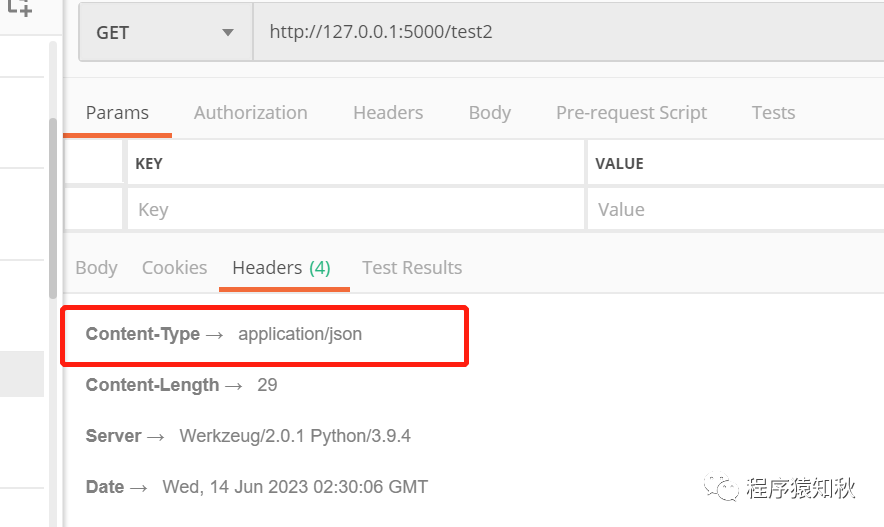
当响应对象是元组时
元组必需包含报文体,可以包含响应码和响应头,返回的元组如下
-
(response, status)
-
(response, headers)
-
(response, status, headers)
响应码默认是200
@app.route("/test3")
def test3():
# 设置响应体与状态码
return {"name":"zhangsan","age":11},201
@app.route("/test4")
def test4():
# 设置响应体与响应头
return {"name":"zhangsan","age":11}, {"token":"dslfjlsf","phone":"133333333"}
@app.route("/test5")
def test5():
# 设置响应体、状态码与响应头
return {"name":"zhangsan","age":11}, 202,{"token":"dslfjlsf","phone":"133333333"}调用1
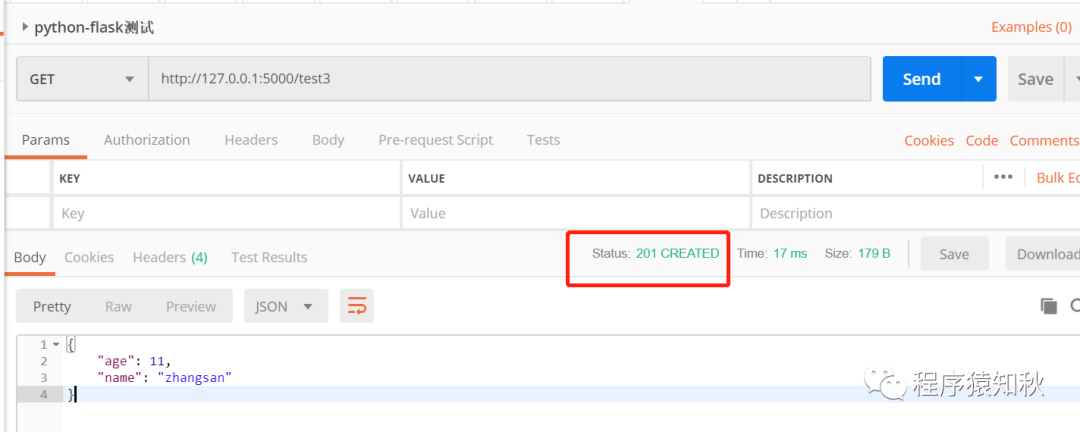
调用2
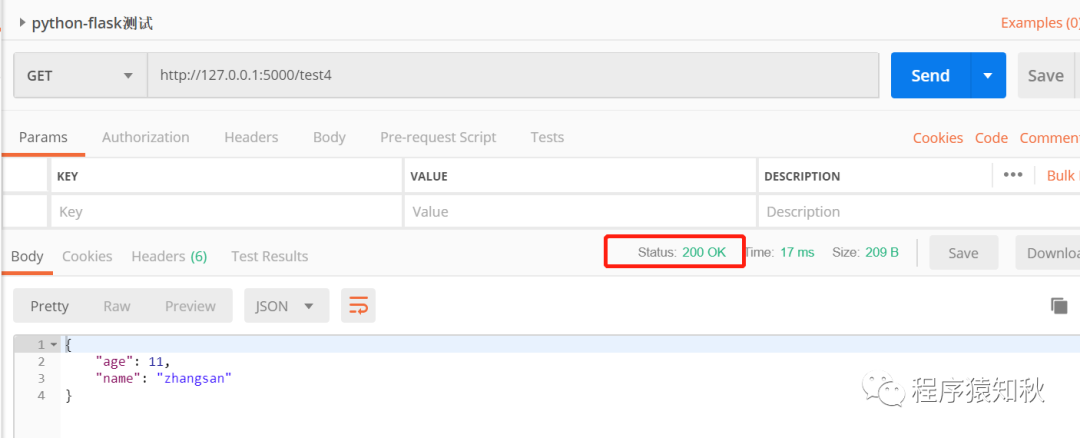
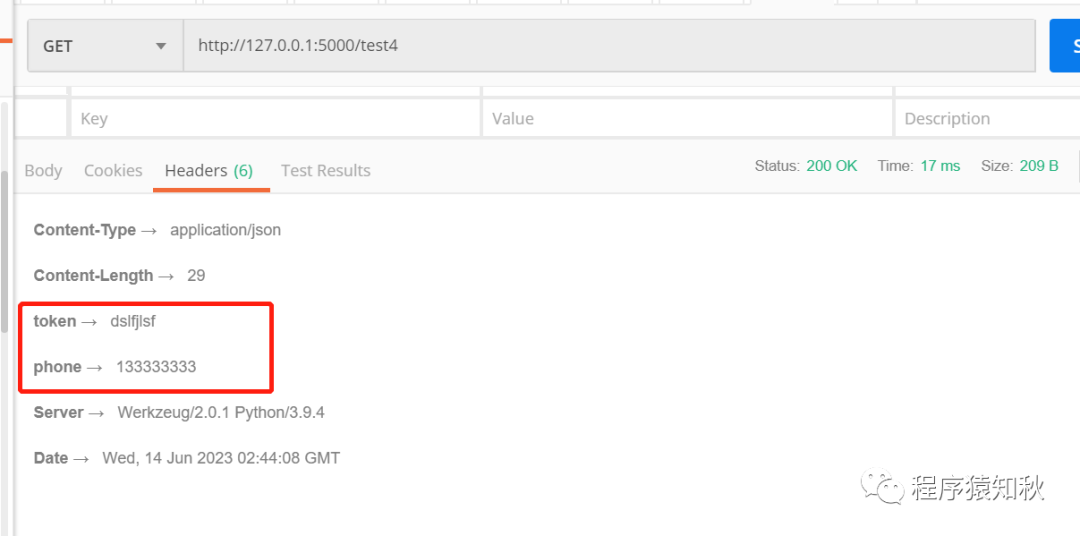
调用3
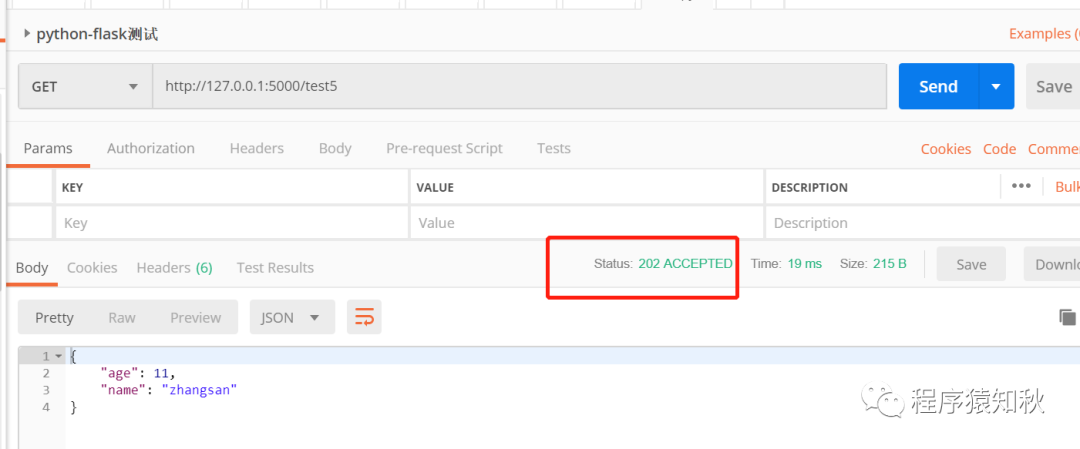
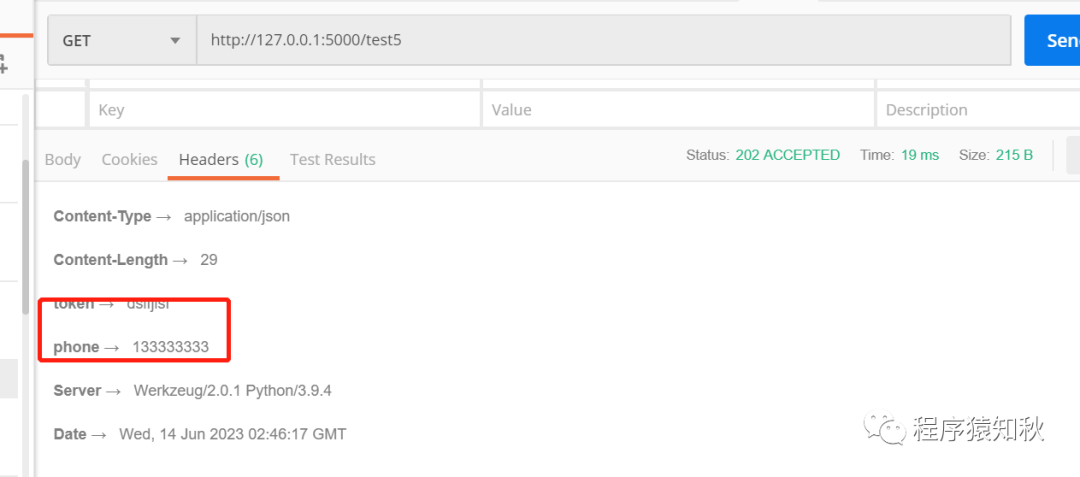
返回其它格式
-
除了常用的Json和文本外,还有其它格式,如:html、xml等,这时我们可以用 render_template() 函数来进行处理。
-
使用之前先导入
from flask import render_template-
render_template(template_name_or_list,**context) 接收两个参数
-
template_name_or_list:一般传入模板的名称,模板必须放在脚本同级的 templates 目录下(手动建立此目录)
-
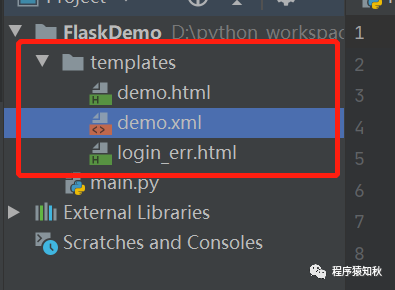
- context:上下文,一般模板里面有些需要替换的变量,可以通过这个参数传入,以键值对的形式
当响应对像是 html时
@app.route("/test6")
def test6():
return render_template("demo.html",name="hello world!!!")demo.html
<!DOCTYPE html>
<html lang="en">
<head>
</head>
<body>
<h1>{
{ name }}</h1>
</body>
</html>调用

当响应对像是 xml时
@app.route("/test7")
def test7():
# 返回的是xml数据,需要设置响应头的 content-type,否则会被当成html数据
return render_template("demo.xml",name="hello xml!!!"),{"content-type":"application/xml"}demo.xml
<a>
<b>
{
{ name }}
</b>
<c>
我是xml
</c>
</a>调用
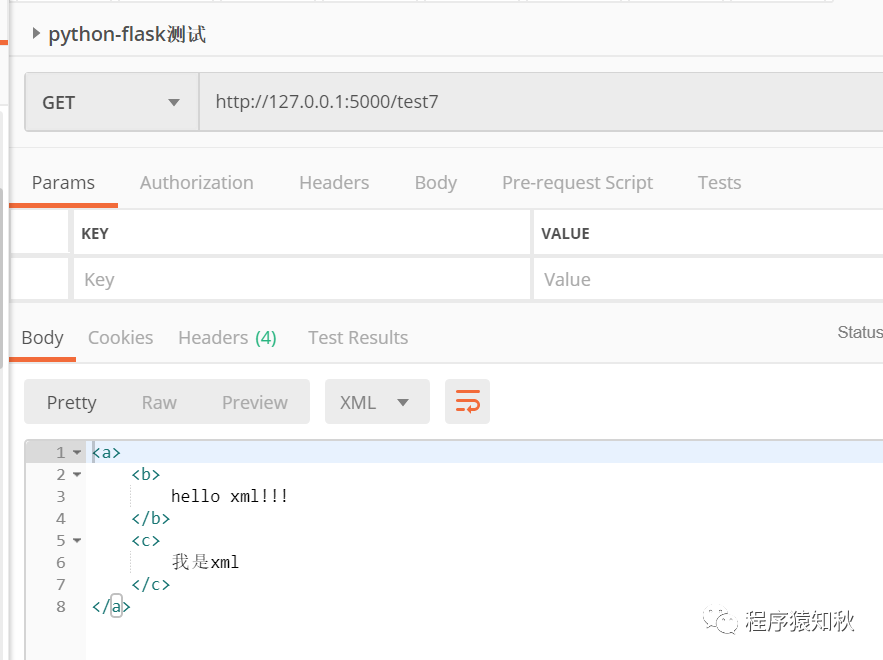
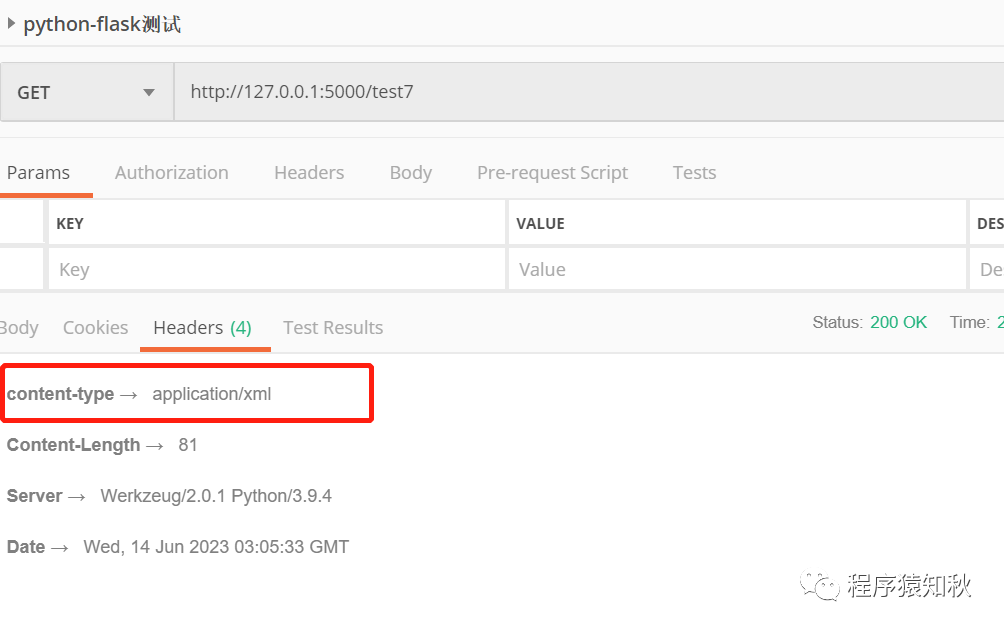
设置更多的响应数据——make_response()
-
如果想设置更多的响应信息,如:cookie等,可以通过make_response()来获取一个响应对象,从而设置cookie和请求头
@app.route("/test8")
def test8():
dict_data={"name": "zhangsan", "age": 11}
resp=make_response(dict_data)
resp.set_cookie("cookie1","aaaa")
resp.headers["phone"]="133333333"
return resp

结合render_template 使用
-
定位到错误页面
@app.errorhandler(404)
def not_fund(error):
resp=make_response(render_template("login_err.html"),404)
resp.set_cookie("cookie1","aaaa")
resp.headers["phone"]="133333333"
return resplogin_err.html
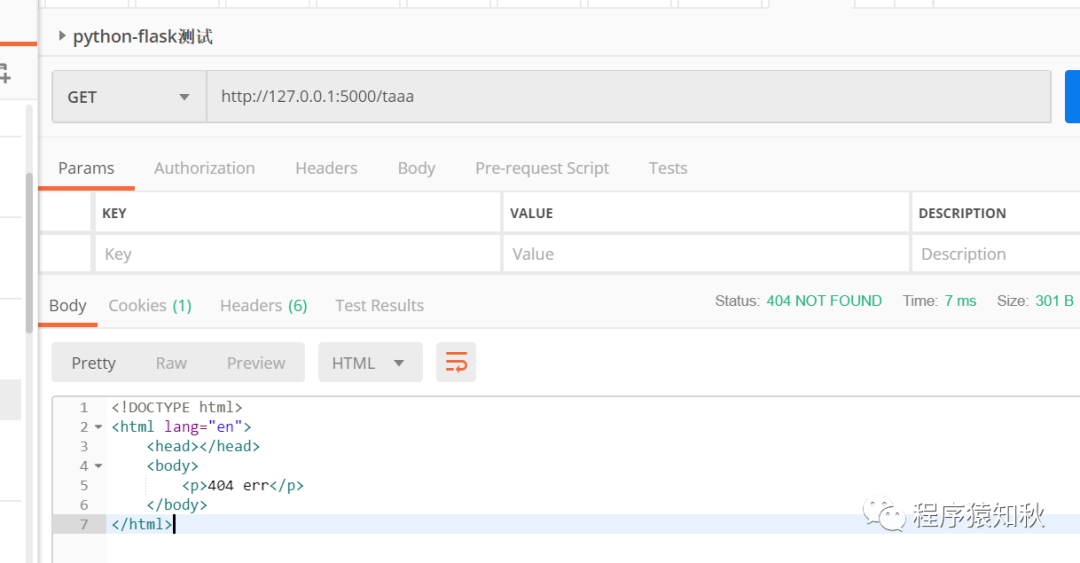
注:@app.errorhandler 修饰符,会将一个响应代码映射到一个视图函数上,这里是将404码,处理成一个个性的错误页面
程序猿与投资生活实录已改名为 程序猿知秋,WX 公众号同款,欢迎关注!